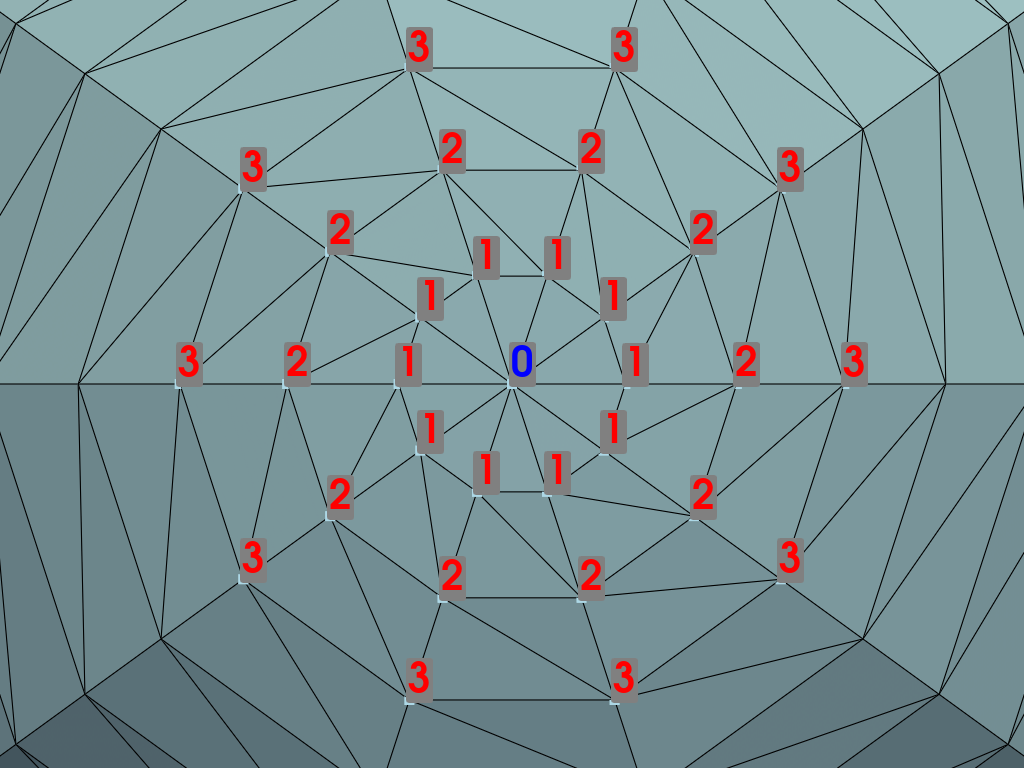pyvista.DataSet.point_neighbors_levels#
- DataSet.point_neighbors_levels( ) Generator[list[int], None, None][source]#
Get consecutive levels of point neighbors.
- Parameters:
- ind
int Point ID.
- n_levels
int, default: 1 Number of levels to search for point neighbors. When equal to 1, it is equivalent to
pyvista.DataSet.point_neighbors().
- ind
- Returns:
See also
Examples
Get the point neighbors IDs starting from the 0-th point up until the third level.
>>> import pyvista as pv >>> mesh = pv.Sphere(theta_resolution=10) >>> pt_nbr_levels = mesh.point_neighbors_levels(0, 3) >>> pt_nbr_levels = list(pt_nbr_levels) >>> pt_nbr_levels[0] [2, 226, 198, 170, 142, 114, 86, 30, 58, 254] >>> pt_nbr_levels[1] [3, 227, 255, 199, 171, 143, 115, 87, 59, 31] >>> pt_nbr_levels[2] [256, 32, 4, 228, 200, 172, 144, 116, 88, 60]
Visualize these points IDs.
>>> from functools import partial >>> pl = pv.Plotter() >>> _ = pl.add_mesh(mesh, show_edges=True) >>> >>> # Define partial function to add point labels >>> add_point_labels = partial( ... pl.add_point_labels, ... text_color='white', ... font_size=40, ... point_size=10, ... ) >>> >>> # Add the first point label >>> _ = add_point_labels(mesh.points[0], labels=['0'], text_color='blue') >>> >>> # Add the neighbors to the plot >>> neighbors = mesh.point_neighbors_levels(0, n_levels=3) >>> for i, ids in enumerate(neighbors, start=1): ... _ = add_point_labels( ... mesh.points[ids], ... labels=[f'{i}'] * len(ids), ... text_color='red', ... ) >>> >>> pl.view_xy() >>> pl.camera.zoom(4.0) >>> pl.show()
